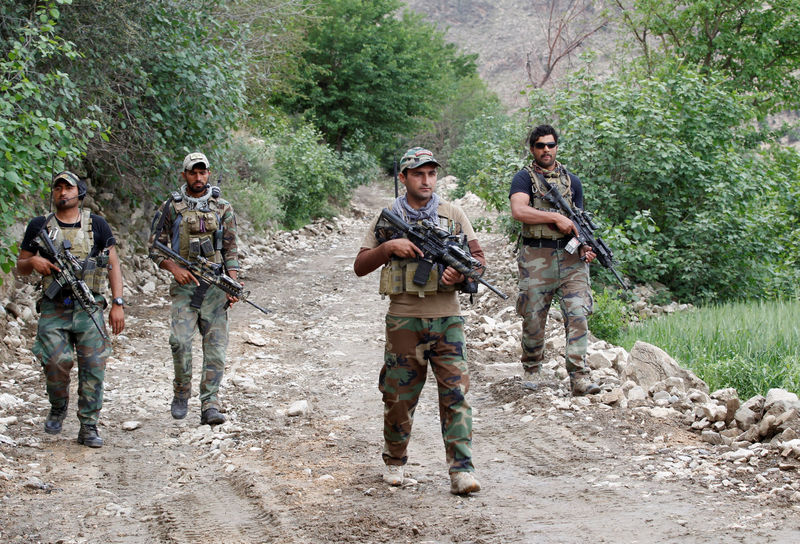By Ahmed Sultan
ACHIN DISTRICT, Afghanistan (Reuters) - The remote site in eastern Afghanistan where the U.S. military dropped its largest non-nuclear bomb ever deployed in combat earlier this month bears signs of the weapon's power, but little evidence of how much material and human damage it inflicted.
Reuters photos and video footage - some of the first images from journalists allowed to get close to the site - reveal a scarred mountainside, burned trees and some ruined mud-brick structures.
They did not offer any clues as to the number of casualties or their identities.
Since the GBU-43 Massive Ordnance Air Blast bomb was dropped on a fortified tunnel complex used by suspected Islamic State fighters in Nangarhar province, access to the site has been controlled by U.S. forces who are battling the militant group alongside Afghan troops.
The U.S. military has said that ongoing fighting had prevented media or independent investigators from visiting the site, and Afghan soldiers said special forces from both countries were still engaging the enemy in the area.
A Reuters witness viewed the site from several hundred yards (meters) away, because of what troops he was accompanying said were continued threats in the area.
While the 21,600-pound (9,797-kg) GBU-43 is billed as the U.S. military's most powerful non-nuclear bomb, its destructive power, equivalent to 11 tonnes of TNT, pales in comparison with the relatively small atomic bombs dropped on Japan at the end of World War Two.
They had blasts equivalent to between 15,000 and 20,000 tonnes of TNT.
Within a few hundred feet of the apparent blast site, leaves remained intact on trees, belying initial expectations that the explosion may have sent a destructive blast wave for up to a mile.
Afghan officials have said nearly 100 militants and no civilians were killed, but the remoteness of the area, the presence of Islamic State fighters, and, more recently, American security forces, has left those claims unverified.
U.S. commanders said the bomb was used to target a tunnel complex and destroy landmines and other booby traps laid by Islamic State militants holed up in the mountains.
No obvious crater or bodies were visible at the scene, according to the Reuters witness.
TUNNELS INTACT NEARBY
Several hundred yards from the strike, Afghan soldiers explored a large tunnel dug beneath a home.
The entrance within the home descended into tunnels large enough for a person to stand in upright, strung with electric cables and light bulbs and strewn with rugs, cushions, and men's clothes and shoes.
One cave was said to have once held prisoners, but was unused at the time of the strike, according to soldiers at the scene.
U.S. Secretary of Defense James Mattis told reporters on Thursday that U.S. troops would not be digging into the site to determine how many people may have been killed.
"Frankly digging into tunnels to count dead bodies is probably not a good use of our troops' time when they are chasing down the enemy that is still capable," he said.
The strike came as President Donald Trump declared a focus on Islamic State, and was part of a larger operation to clear Islamic State militants from their strongholds in the mountains along the border between Afghanistan and Pakistan.
In March, U.S. forces conducted 79 "counter-terror strikes" against Islamic State in Nangarhar, killing as many as 200 militants, according to the U.S. military command in Kabul.
U.S. military officials estimate there are about 600 to 800 Islamic State fighters in Afghanistan, mostly in Nangarhar, but also in the neighboring province of Kunar.
Taliban militants, meanwhile, remain the dominant insurgent group in Afghanistan.
A Taliban attack on a large Afghan army headquarters in the north of the country on Friday killed more than 140 soldiers, in what is believed to be the deadliest single attack on Afghan forces since the Taliban were ousted in 2001.
